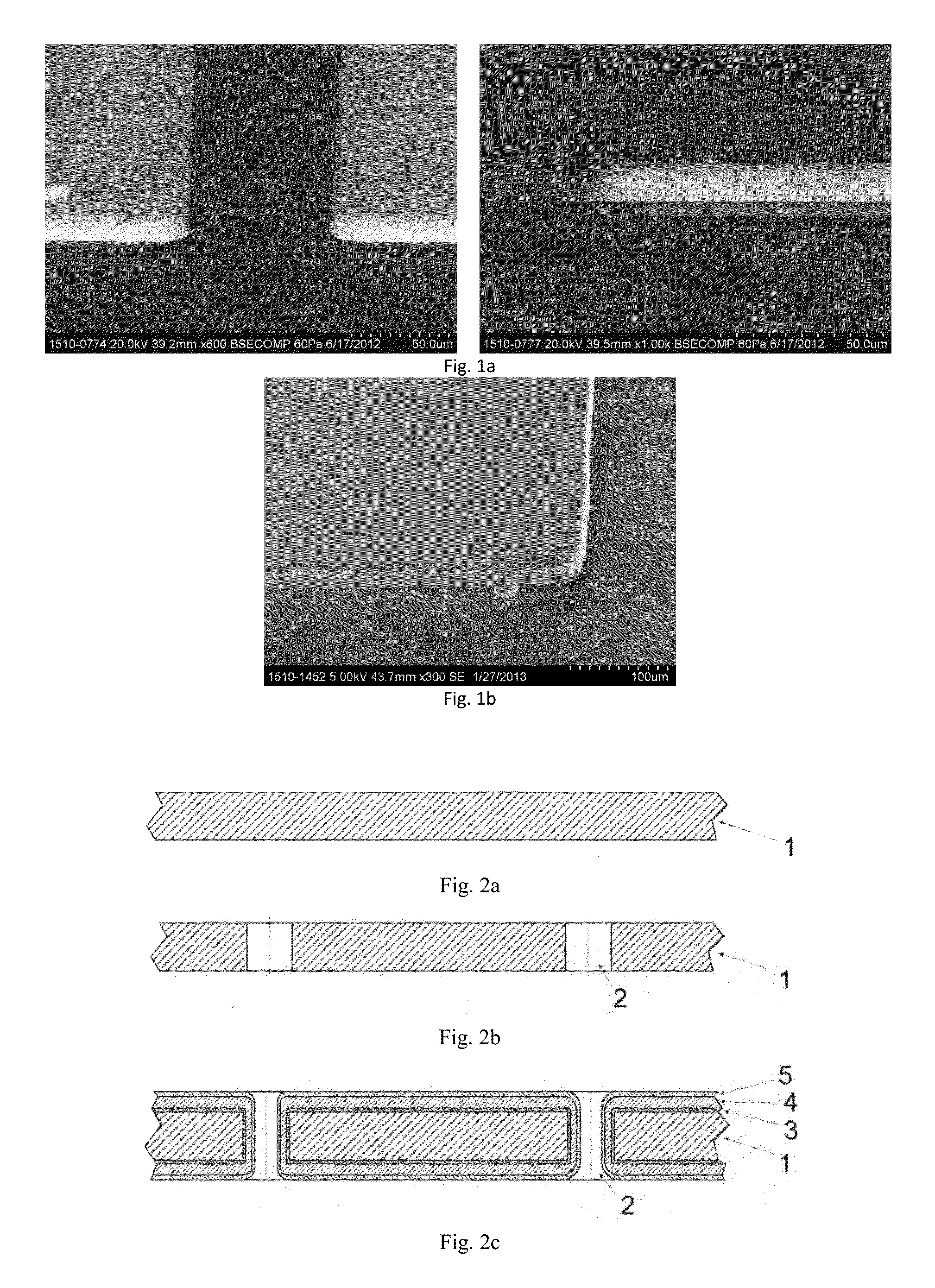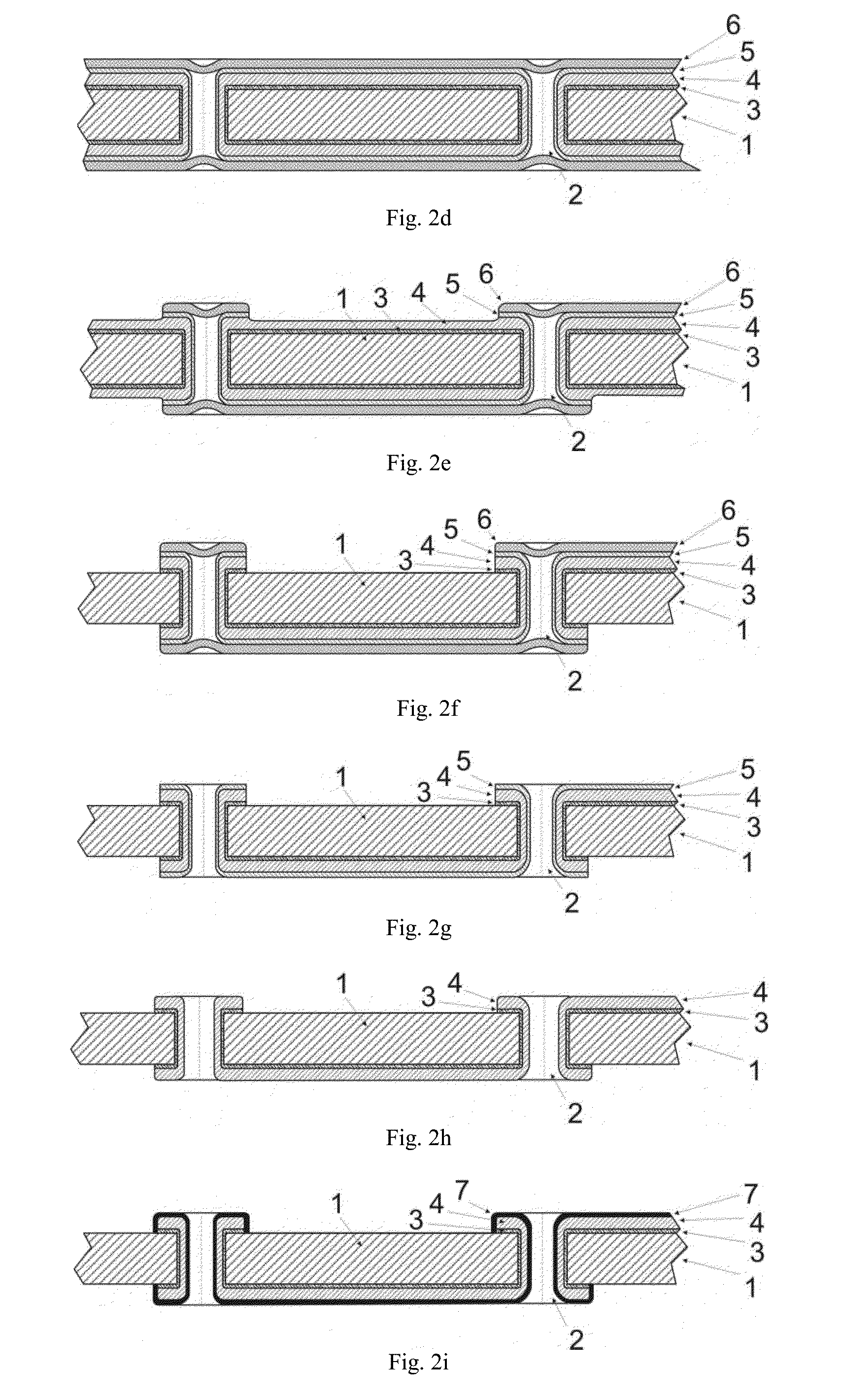Method for manufacturing a double-sided printed circuit board
- Summary
- Abstract
- Description
- Claims
- Application Information
AI Technical Summary
Benefits of technology
Problems solved by technology
Method used
Image
Examples
examples of specific embodiments
OF THE CLAIMED METHOD
example 1
[0070]A series of vias are produced by laser drilling according to PCB given coordinates in a polished (Ra<0.1) ceramic substrate made of aluminum oxide. The characteristics of laser radiation and produced vias are indicated in Table 1.
TABLE 1Characteristics of laser radiation and vias made therebyPulseRadiationPulserepetitionAverageLaser typewavelengthdurationratepowerVia sizeFiber laser1.064 microns1 μs100 Hz100 W0.25 mm
[0071]Then the multi-layer metal coating, which consists of the adhesion coating, the conductive layer, and the mask layer, is magnetron-deposited onto the substrate with the vias produced. The characteristics of the deposited layers are given in Table 2. Deposition of the multi-layer coating in a single process is performed in a magnetron unit having a corresponding set of magnetron targets (Cr, Cu, V).
[0072]Magnetron deposition is carried out on both sides of the substrate and in the vias.
TABLE 2Composition and parameters of the metallization layers depositedin a...
example 2
[0081]A series of vias are produced by laser drilling according to PCB given coordinates in a grinded (Ra<0.6) ceramic substrate made of aluminum nitride. The characteristics of laser radiation and produced vias are indicated in Table 5.
TABLE 5Characteristics of laser radiation and vias produced therebyPulseRadiationPulserepetitionAverageLaser typewavelengthdurationratepowerVia sizeFiber laser1.064 microns10 μs100 Hz100 W0.25 mm
[0082]Then, this substrate is provided with a multi-layer metal coating by magnetron deposition in a single process, the coating consisting of the layers which characteristics are shown in Table 6.
TABLE 6Composition and parameters of the metallization layers depositedin a single process (magnetron deposition) and their purposeLayer number fromLayerthe surfacecompositionThicknessPurpose1Titanium (Ti) 1 micronMask layer2Vanadium (V) 1 micron(two-layer mask)3Copper (Cu) 20 micronsConductive layer4Chromium (Cr)0.05 micronsAdhesion sub-layer
[0083]Magnetron depo...
PUM
 Login to View More
Login to View More Abstract
Description
Claims
Application Information
 Login to View More
Login to View More - R&D
- Intellectual Property
- Life Sciences
- Materials
- Tech Scout
- Unparalleled Data Quality
- Higher Quality Content
- 60% Fewer Hallucinations
Browse by: Latest US Patents, China's latest patents, Technical Efficacy Thesaurus, Application Domain, Technology Topic, Popular Technical Reports.
© 2025 PatSnap. All rights reserved.Legal|Privacy policy|Modern Slavery Act Transparency Statement|Sitemap|About US| Contact US: help@patsnap.com



